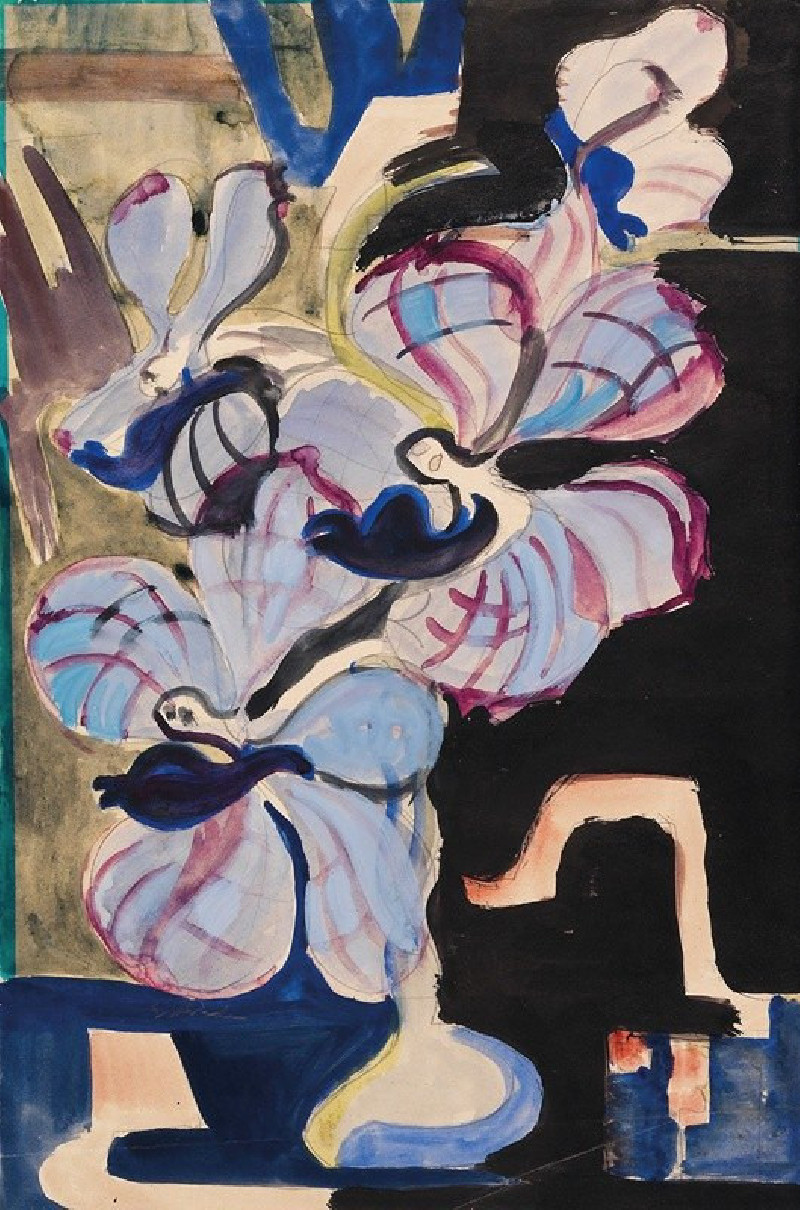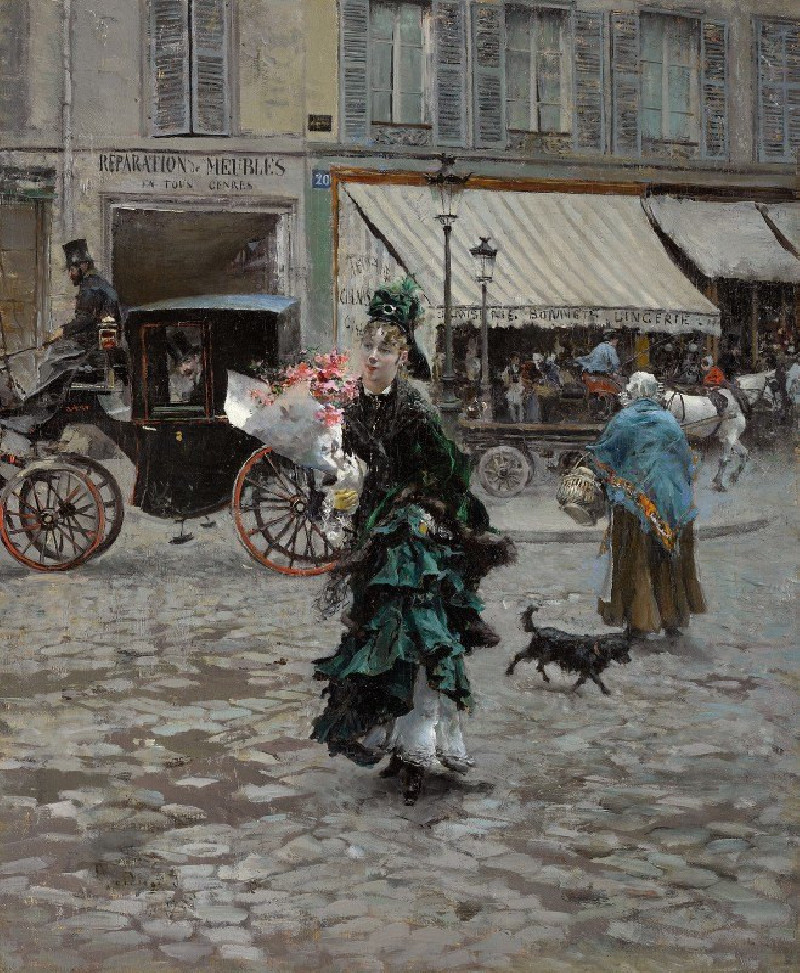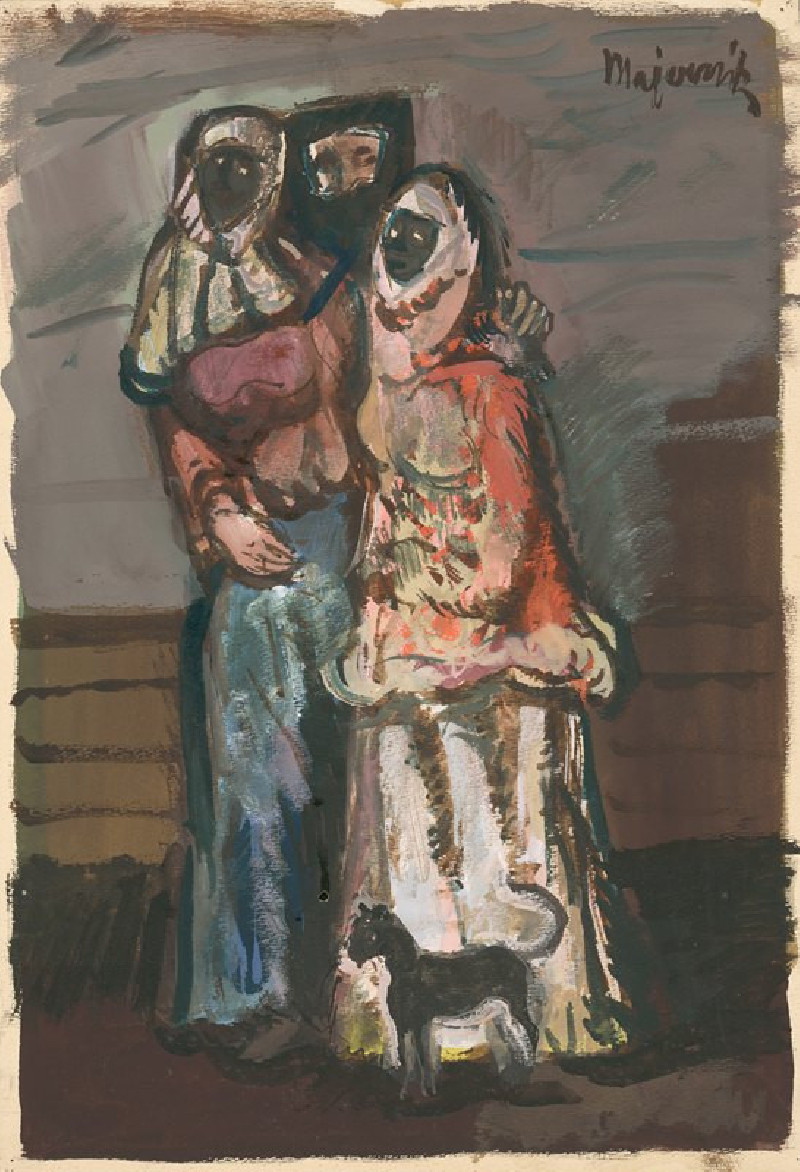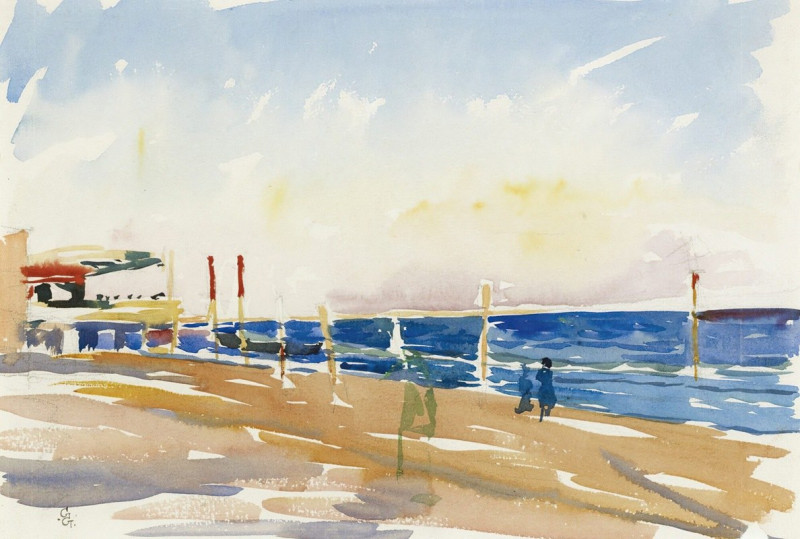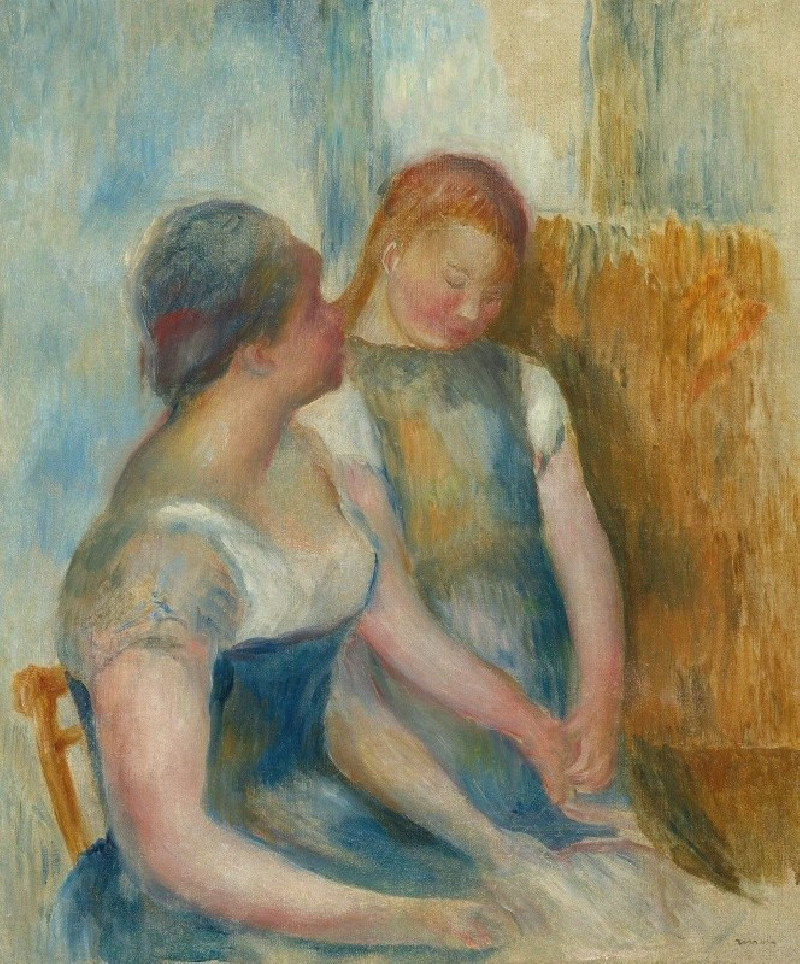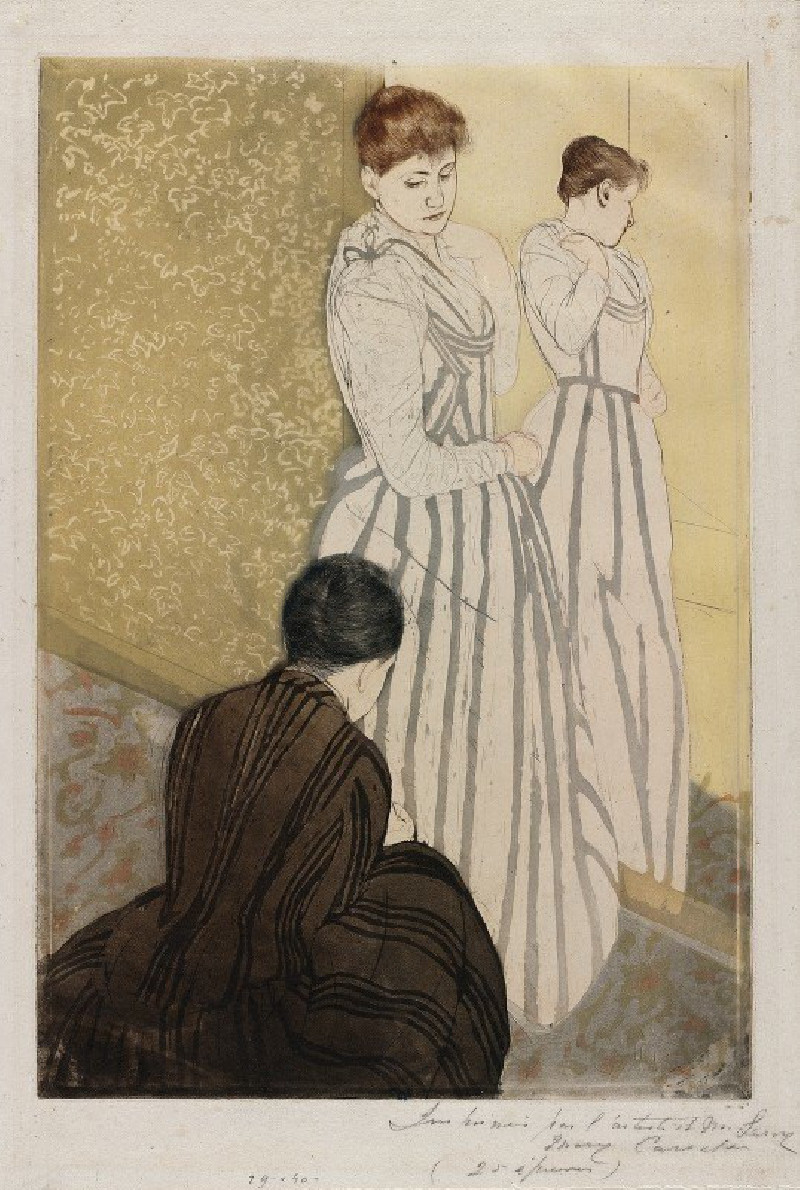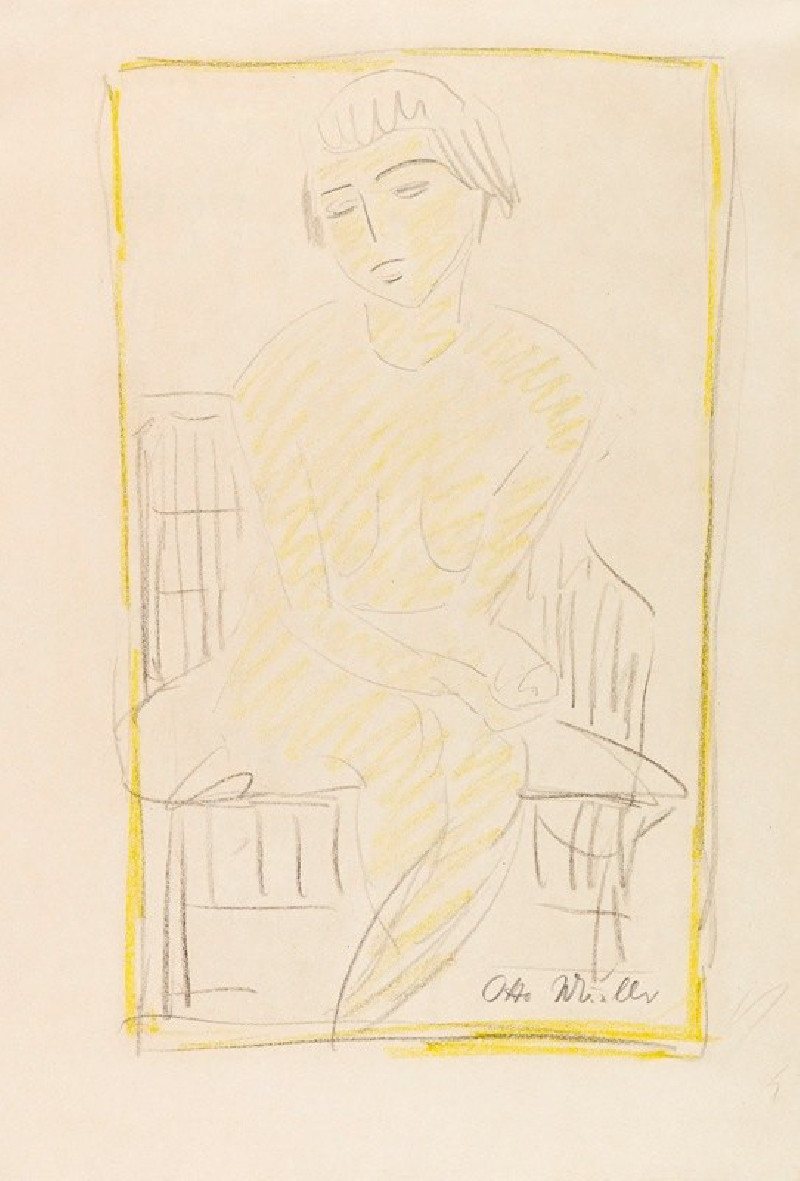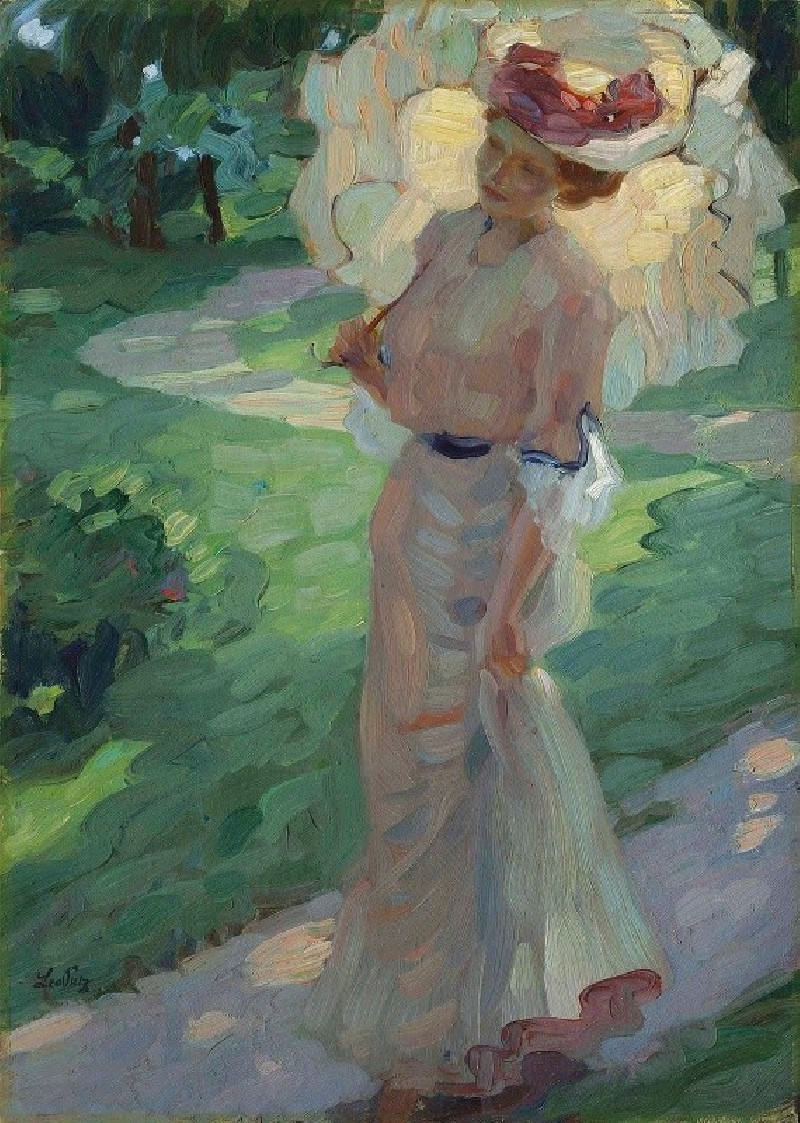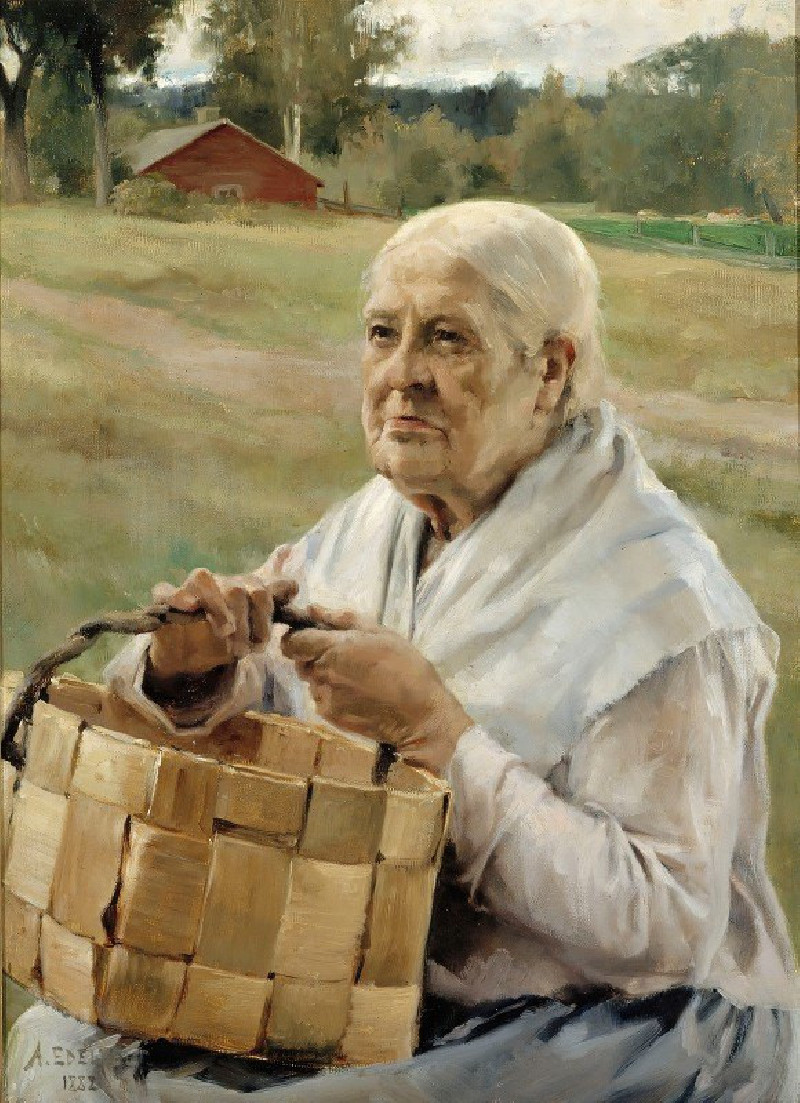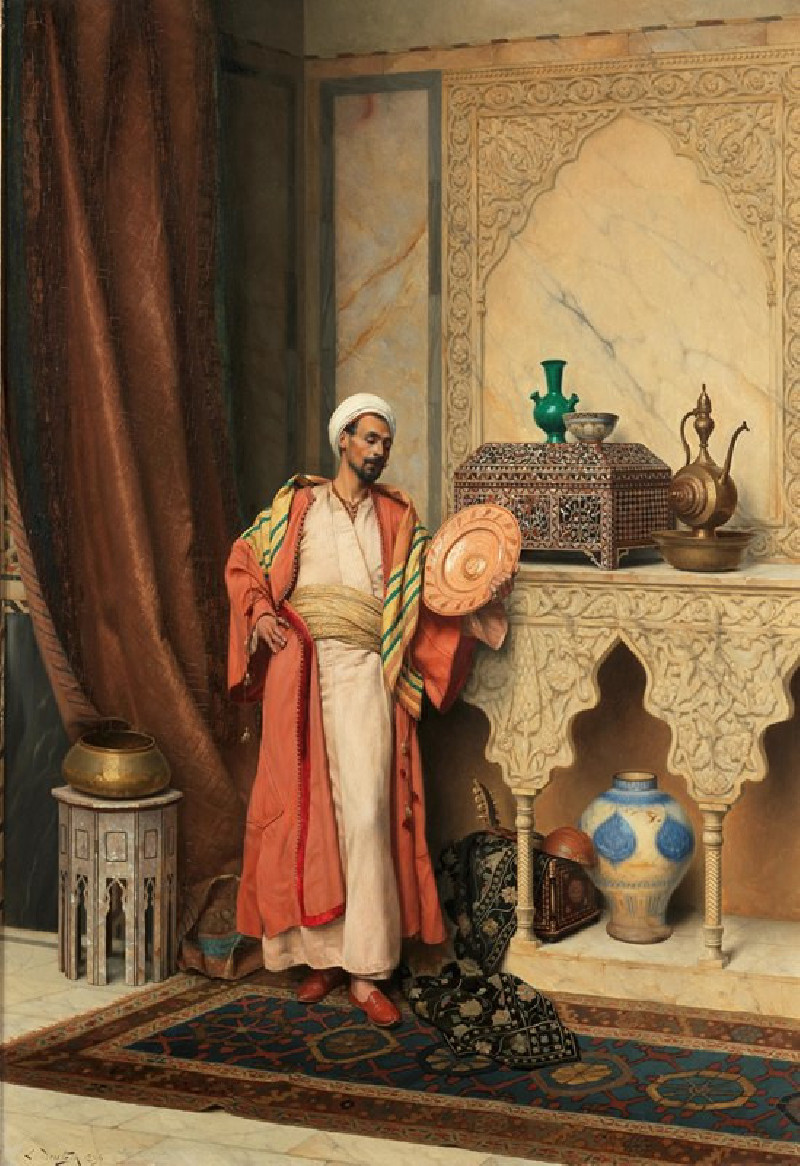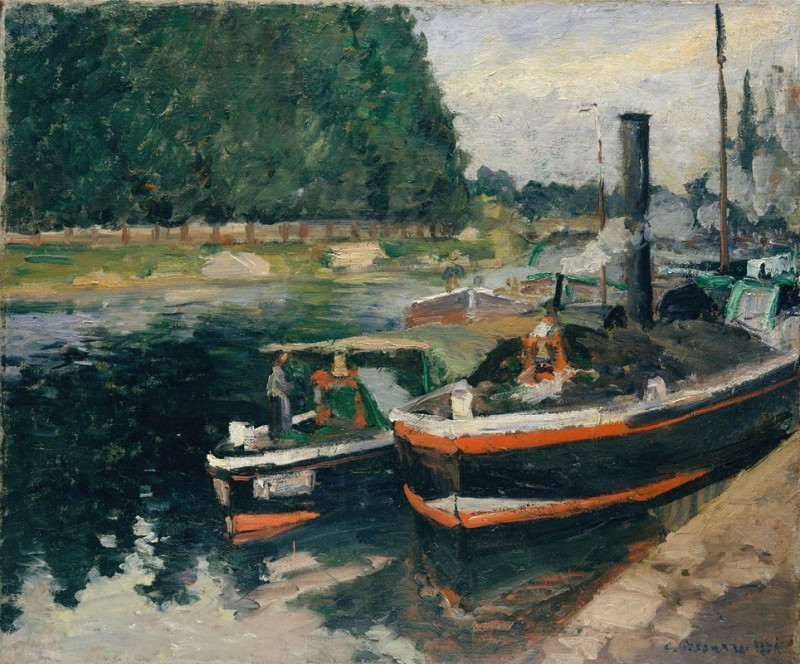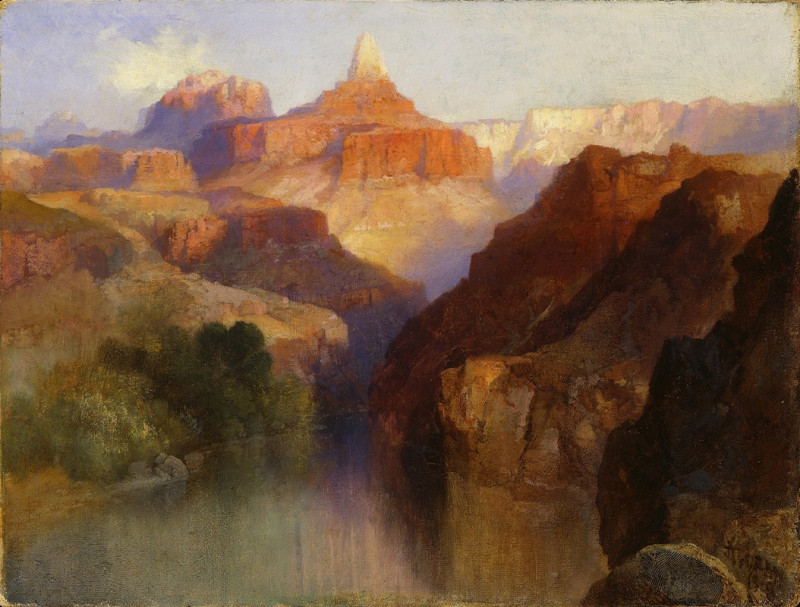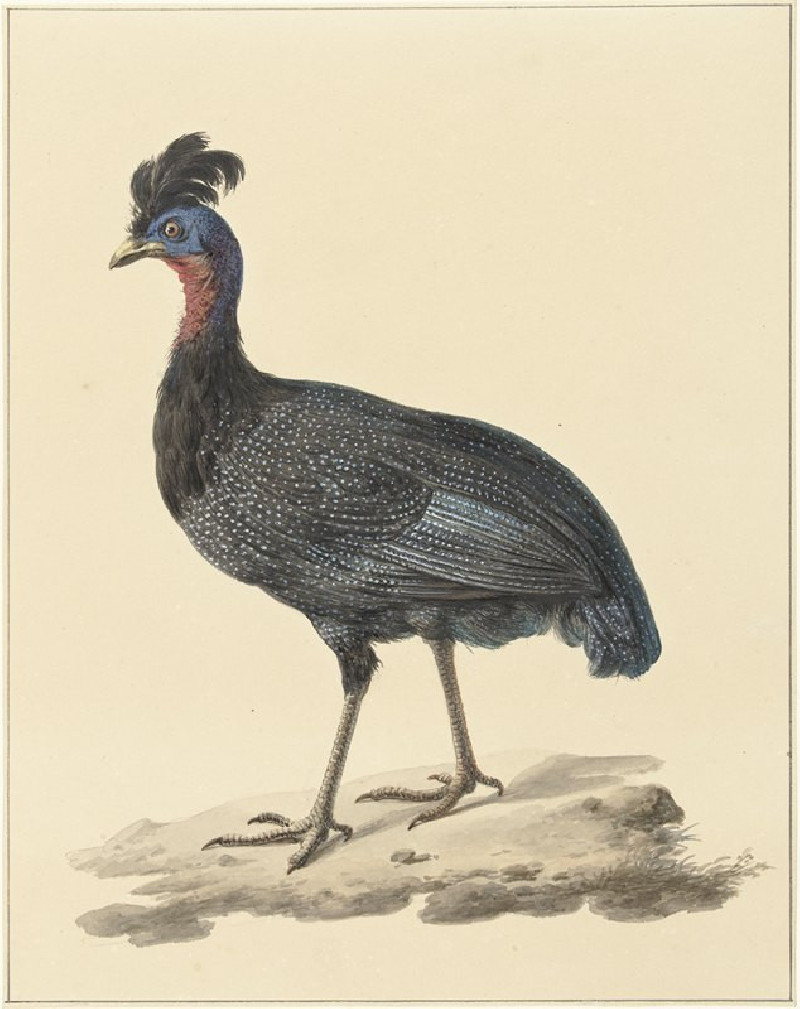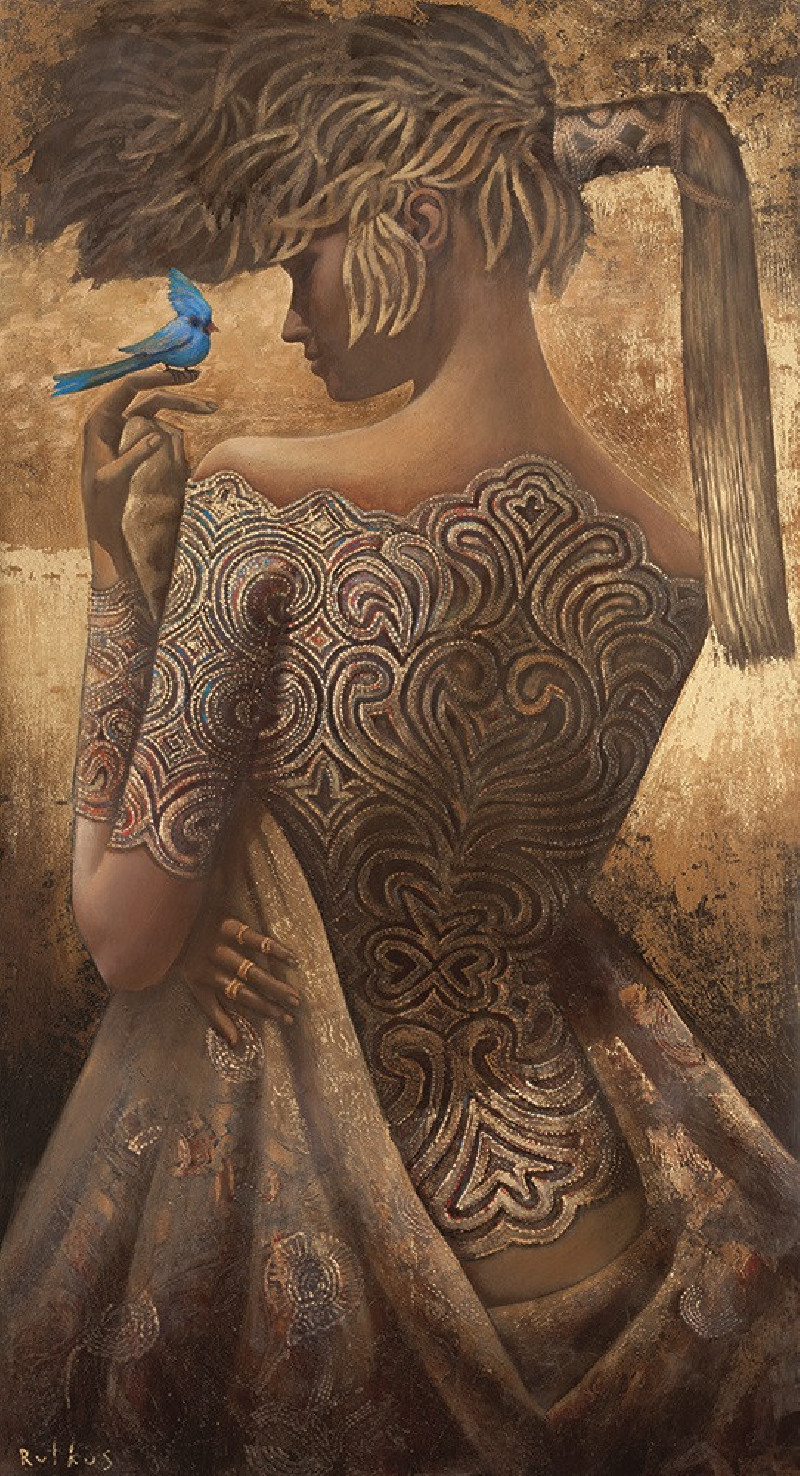Stillleben mit Orchideen (Tanzende Traumwesen) (1927)
Technique: Giclée quality print
Recommended by our customers
More about this artwork
Ernst Ludwig Kirchner's 1927 painting, "Stillleben mit Orchideen (Tanzende Traumwesen)" (Still Life with Orchids [Dancing Dream Creatures]), presents a vibrant and expressive interpretation of natural forms through the lens of German Expressionism. This artwork, featuring an eye-catching composition of orchids, is marked by Kirchner’s distinctive use of bold lines and vivid colors that animate the canvas, imbuing the flowers with a surreal, almost fantastical quality.The orchids in the painting are depicted with exaggerated, curvilinear forms and rich, contrasting shades of blue, purple, and pink, interspersed with highlights of white and deep accents of black. The dramatic, swirling lines and striking color contrasts lend the flowers a dynamic, almost ethereal presence, as if they are dancing or moving in a dreamlike space. This treatment not only enhances the visual impact of the composition but also serves to evoke an emotional and imaginative response from the viewer.True to the Expressionist movement, Kirchner's work transcends the traditional boundaries of still life, transforming ordinary flowers into an extraordinary scene filled with movement and emotion. This painting is a testament to Kirchner’s innovative style and his ability to capture the deeper, psychological resonance of his subjects through abstract forms and intense colors.
Delivery
Returns
Ernst Ludwig Kirchner (1880–1938) was one of the most important German Expressionist painters. He was a co-founder of Die Brücke, a group of German expressionist artists formed in Dresden in 1905. Die Brücke and Kirchner took inspiration from Vincent Van Gogh and Edvard Munch, as well as African and Oceanic art. They used woodblock printing as a medium to showcase their signature style: flat, unrealistic images with vivid colors. The recurring themes in Kirchner's artworks included exotic cultures, faraway landscapes, self-portraits, dancers and Berlin street life. His paintings and prints effectively portrayed non-European cultures despite the fact that he never traveled outside of Europe.

